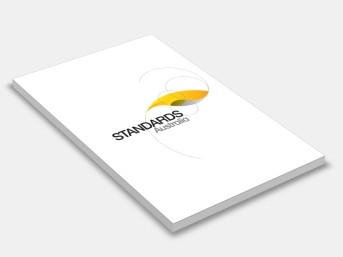AS 3660.1:2014 Termite management, Part 1: New building work
Standards Australia
Supersedes: AS 3660.1-2000 Termite management, Part 1: New building work
Draft Designation: DR2 AS 3660.1Amended by: AS 3660.1:2014 Amd 1:2017 Termite management, Part 1: New building work
This Standard incorporates Amendment No. 1 (September 2017). The changes required by the Amendment are indicated in the text by a marginal bar and amendment number against the clause, note, table, figure or part thereof affected.
The objective of this Standard is to provide builders, building designers, regulatory authorities, termite management system manufacturers and installers, and those people requiring termite management systems, with methods of termite management for implementation during construction of new building work.
The objective of this revision is to update the Standard to reflect current needs and practices for termite management in new buildings and new building work.
This Standard is part of a series on termite management, as follows:
AS
3660 Termite management
3660.1 Part 1: New building work (this Standard)
3660.2 Part 2: In and around existing buildings and structures—Guidelines
3660.3 Part 3: Assessment criteria for termite management systems
The terms ‘normative’ and ‘informative’ have been used in this Standard to define the application of the appendix to which they apply.
A ‘normative’ appendix is an integral part of a Standard, whereas an ‘informative’ appendix is only for information and guidance.
First published as AS CA43-1966. AS CA50 first published 1968. AS CA50 revised and redesignated AS1694-1974. AS CA43-1966 revised and redesignated AS 2057-1977. Third edition 1986. AS 2178 first published 1978. Second edition 1986. AS 1694-1974, AS 2057-1986 and AS 2178-1986 revised, amalgamated and redesignated AS 3660-1993. AS 3660-1993 revised and redesignated in part as AS 3660.1-1995. Third edition 2014. Reissued incorporating Amendment No. 1 (September 2017).
This Standard sets out requirements for the design and construction of subterranean termite management systems for new buildings and new building work. It includes solutions for both physical and chemical termite management systems. Options are provided so that various approaches may be used either singly, or in combination, to provide an integrated termite management system.
This Standard includes methods to deter concealed entry by termites from the soil to the building above the termite management system inspection zone.
This Standard does not cover procedures or details on maintenance and inspection.
This Standard does not apply to the following:
(a) The provision of termite management systems to existing buildings (see Note 3).
(b) Drywood termite infestations, as the systems described herein will not be effective against access by drywood termites or termite nests established without soil contact.
(c) Durability, maintenance and inspection procedures or details.
NOTES:
1: The treatment of existing buildings is covered in AS 3660.2. For the interface between new and existing structures, see Paragraph A1, Appendix A.
2: For testing of systems and materials, refer to AS 3660.3.
3: A termite management system constructed in accordance with this Standard cannot prevent termite attack as systems may be bridged or breached. Termite-bridged or termite-breached systems may be detected during inspections.
4: The diagrams used in this Standard are indicative only and are deemed to meet the design requirements outlined in Section 2. The diagrams apply to domestic construction techniques. Some diagrams may have construction details (e.g. damp-proof courses, vapour barriers, and the like) omitted for clarity.
5: Issues such as the detection of termite infestation, and the necessity and accessibility for regular, competent inspections can be found in AS 3660.2. It is recommended that access for inspection, maintenance and durability issues be considered part of the design process.
6: It is stressed that the installation of a termite management system does not negate the need for regular competent inspections after installation.
7: Activities such as turfing, paving and landscaping adjacent to the building might compromise the inspection zone clearances required by this Standard. Where it is known that these activities will be undertaken, the design should ensure that sufficient dimensions are provided so that the required minimum inspection zones are not compromised.
8: Where construction is at or close to the property boundary, it may not be possible to apply the solutions of this Standard. See Paragraph A2, Appendix A.
9: Termite management systems may not be effective where a nest is established inside the building above inspection zones. Such nests typically require significant plumbing or drainage faults for their water supply.
Contents:
Section 1: Scope And Application
Section 2: Design Requirements
Section 3: Requirements—General
Section 4: Requirements—Concrete Slabs
Section 5: Requirements—Sheet Materials
Section 6: Requirements—Granular Materials
Section 7: Requirements—Chemical Termite Management System
Appendix A: Guidance On Installation Of Termite Management Systems
Appendix B: Economically Important Wood-Feeding Species Of Subterranean Termites In Australia
Appendix C: Naturally Termite-Resistant Timbers
Appendix D: Preservative-Treated Timber
Appendix E: Soil-Sampling Protocol For Testing Horizontal And Vertical Chemical Soil Termite Management Systems
Appendix F: Building Site Management
Termites.
Australian Building Codes Board; Australian Environmental Pest Managers Association; Australian Pesticides and Veterinary Medicines Authority; Cement Concrete and Aggregates Australia; CHOICE; Forest and Wood Products Australia; Forest Corporation of NSW; Housing Industry Association; Institute of Building Consultants; Local Government and Shires Associations of New South Wales; Master Builders Australia; Timber Preservers Association of Australia; Total Environment Centre.
